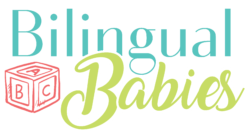In order to develop conversational fluency, experts in bilingualism have been stating that children need to be exposed to the minority language about 20-25% of their waking time (Pearson, 2008). Obviously, this number is no exact science. It is a rough ‘ballpark estimate’ because it very much depends on the quality of the input and exposure.
But what type of input and exposure is best?
While several factors play a role (e.g., the child’s personality, relationships with the speakers of the minority etc.), social interaction is a key ingredient. In fact, research has found that live interaction such as reading or talking to a child is more effective than exposure to recorded sounds one finds in television, movies, or online videos (Kuhl, Feng-Ming, & Huei-Mei, 2003). Other studies found that being read aloud to in the minority language increases children’s vocabulary much more than watching TV in that language (Patterson, 2002). In short, the more you talk to your child or read aloud to your child, the more the child will actively use the minority language.
Hence, while audio and video materials can serve as a positive and entertaining sources of supplemental support for language learning, human interaction is the best method for promoting children’s language development in both, their first as well as additional languages.
References:
- Kuhl, P., Feng-Ming, T., & Huei-Mei, L. (2003). Foreign-language experience in infancy: Effects of short-term exposure and social interaction on phonetic learning. Proceedings of the National Academy of Sciences of the United States of America, 100(15), 9096–9101. https://www.ncbi.nlm.nih.gov/pmc/articles/PMC166444/
- Patterson, J. L. (2002). Relationship of expressive vocabulary to frequency of reading and television experience among bilingual toddlers. Applied Psycholinguistics, 23, 493–508.
- Pearson, B. Z. (2008). Raising a bilingual child: A step-by-step guide for parents. New York: Random House.

